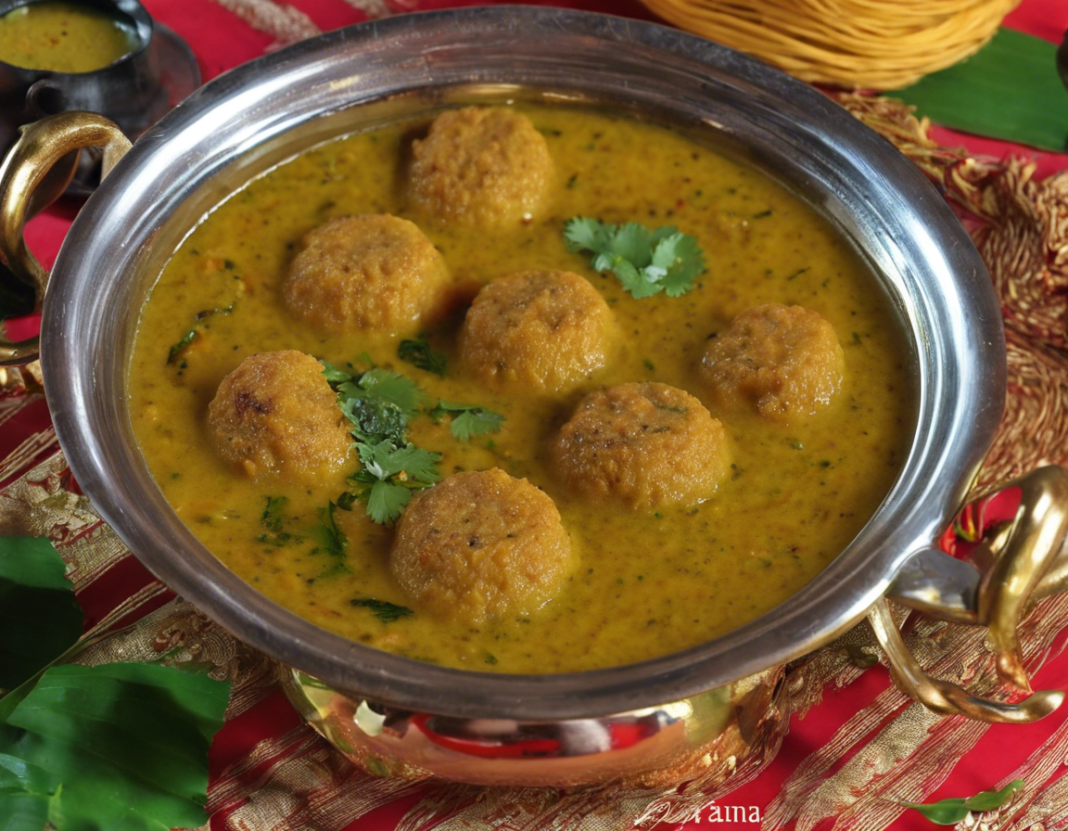Introduction
Dal Bati Churma is a traditional and iconic dish from the desert state of Rajasthan in India. This hearty and flavorful meal consists of three main components – dal (lentils), bati (baked whole wheat dumplings), and churma (a crumbly wheat dessert). Each of these elements complements the others to create a wholesome and delicious culinary experience. In this comprehensive guide, we will delve into the origins of Dal Bati Churma, discuss the preparation of each component, explore variations of the dish, and provide tips for making the perfect Dal Bati Churma at home.
Origins of Dal Bati Churma
Dal Bati Churma has its roots in the rural kitchens of Rajasthan, where the harsh desert climate necessitated the creation of hearty and energy-rich dishes. The dish is a celebration of the local ingredients and cooking techniques prevalent in the region. Traditionally, Dal Bati Churma was cooked over wood fires or hot sand, imparting a unique smoky flavor to the dish.
Over the years, Dal Bati Churma has evolved from a humble farmer’s meal to a popular dish served at weddings, festivals, and special occasions across India. It has also gained international recognition as a quintessential Rajasthani delicacy.
Preparation of Dal Bati Churma
-
Dal: The dal in Dal Bati Churma is typically made with a combination of lentils such as tuvar (pigeon pea) dal, chana (split chickpea) dal, and moong (mung bean) dal. The lentils are cooked with aromatic spices like cumin, turmeric, and coriander, and then tempered with ghee, mustard seeds, and dried red chilies.
-
Bati: Bati are round, baked dumplings made from whole wheat flour, semolina, and ghee. The dough is shaped into balls and baked in a traditional clay or tandoor oven until they are golden brown and crispy on the outside.
-
Churma: Churma is a sweet dessert made by coarsely grinding baked batis and mixing them with ghee, jaggery (or sugar), and cardamom powder. The mixture is then shaped into small balls or served as a crumbly mixture.
Variations of Dal Bati Churma
While the traditional recipe for Dal Bati Churma remains popular, there are several regional variations and modern twists on the dish. Some common variations include:
- Masala Bati: Batis stuffed with a spicy mixture of potatoes, peas, and spices.
- Satta Bati: Batis soaked in ghee and served with a tangy tomato-based curry.
- Kesariya Bati: Batis infused with saffron and served with a creamy saffron-flavored dal.
- Chocolate Churma: A modern twist on churma, made with chocolate, nuts, and dried fruits.
Tips for Making the Perfect Dal Bati Churma at Home
-
Use the Right Ingredients: For authentic flavors, use whole wheat flour, a mix of lentils, and traditional spices like asafoetida, fenugreek, and dried mango powder.
-
Balancing Flavors: Pay attention to the balance of flavors – the dal should be tangy, the bati should be crispy outside and soft inside, and the churma should be sweet and fragrant.
-
Cooking Techniques: While traditional batis are baked in a tandoor, you can also bake them in a preheated oven or cook them on a stovetop. Similarly, the dal can be cooked in a pressure cooker for convenience.
-
Serve Hot: Dal Bati Churma is best enjoyed hot and fresh. Serve the batis with a dollop of ghee and the dal garnished with fresh coriander leaves.
-
Accompaniments: Pair Dal Bati Churma with tangy pickles, spicy green chutney, or cool raita to enhance the meal experience.
FAQs (Frequently Asked Questions)
- Can I make Dal Bati Churma ahead of time?
-
While the dal and churma can be prepared in advance, it is recommended to bake the batis fresh before serving to retain their crispiness.
-
Can I substitute whole wheat flour with all-purpose flour for batis?
-
Whole wheat flour is traditionally used for batis to impart a nutty flavor and dense texture. However, you can use a mix of whole wheat and all-purpose flour for a lighter texture.
-
Is Dal Bati Churma a complete meal in itself?
-
Yes, Dal Bati Churma is a wholesome meal that combines proteins, carbohydrates, and fats. It can be enjoyed as a fulfilling lunch or dinner option.
-
Can I make a vegan version of Dal Bati Churma?
-
Yes, you can use plant-based ghee or oil instead of traditional ghee to make a vegan-friendly version of Dal Bati Churma.
-
What are some common accompaniments for Dal Bati Churma?
-
Pickles, chutneys, sliced onions, and a glass of buttermilk are popular accompaniments that complement the flavors of Dal Bati Churma.
-
How can I store leftover Dal Bati Churma?
-
Store leftover dal and churma in airtight containers in the refrigerator for up to 2-3 days. Batis can be stored at room temperature for a day and reheated in the oven before serving.
-
Can I freeze batis for later use?
-
Batis can be frozen once they are baked and cooled. Wrap them in foil or freezer bags and store them for up to a month. Thaw and reheat in the oven before serving.
-
What is the significance of serving ghee with Dal Bati Churma?
-
Ghee is a traditional ingredient in Rajasthani cuisine known for its richness and flavor. It adds a luxurious touch to the meal and enhances the overall taste of Dal Bati Churma.
-
Are there any regional variations of Dal Bati Churma in Rajasthan?
-
Yes, different regions in Rajasthan have their own unique variations of Dal Bati Churma, with slight differences in spices, cooking techniques, and accompaniments.
-
Can I make mini batis instead of traditional large batis?
- Yes, you can make small-sized batis for individual servings or appetizers. Adjust the baking time accordingly to ensure they are cooked through.
